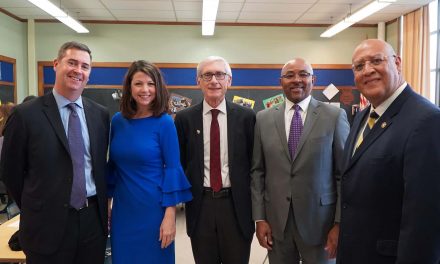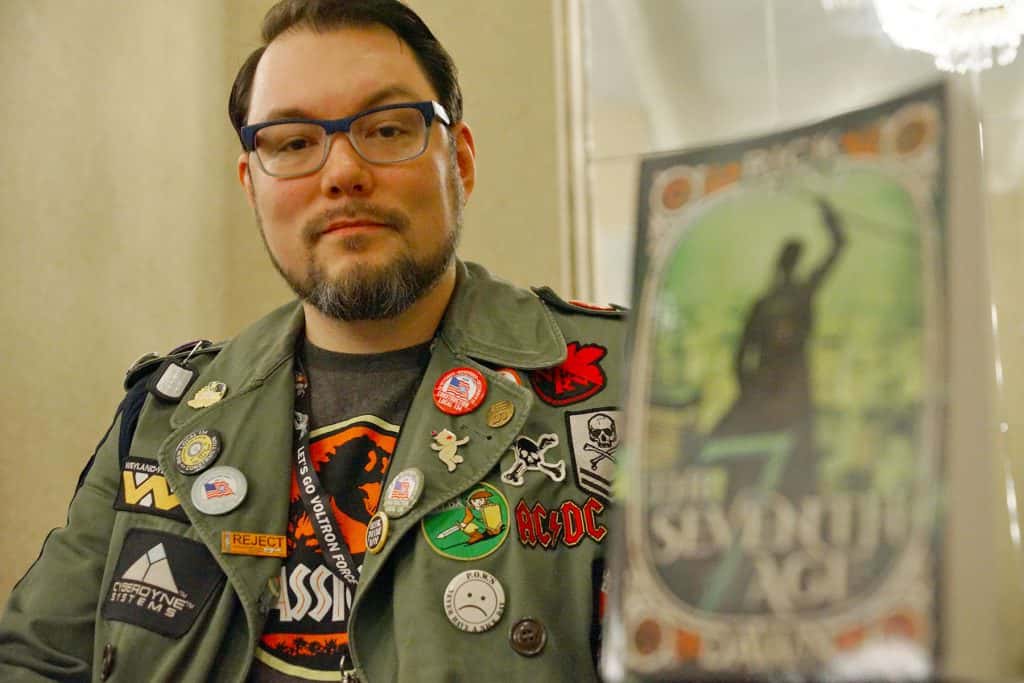
South Korea is facing a demographic crisis as its birth rate continues to plummet, leading experts to warn of potential societal and economic extinction.
The country’s fertility rate has fallen to the lowest in the world, recording 0.78 children per woman in 2022, far below the replacement level of 2.1. This dramatic decline can be attributed to a confluence of social, economic, and cultural factors, each compounding the challenges of reversing this trend.
Yoo Young Yi’s family history reflects the trend vividly: her grandmother had six children, her mother had two, but Yoo has decided not to have any. The decision is representational of a larger trend among South Koreans, who are increasingly choosing to forgo having children.
Yoo, a 30-year-old employee at a financial company in Seoul, explained the dilemma faced by many of her peers.
“My husband and I like babies so much, but there are things that we’d have to sacrifice if we raised kids,” Yoo said. “So it’s become a matter of choice between two things, and we’ve agreed to focus more on ourselves.”
The sentiment is widespread in South Korea, where many have opted not to marry or start families. While similar trends are observed in other developed nations, South Korea’s situation is particularly severe.
The country’s statistics agency reported in 2023 that the total fertility rate — the average number of babies born to each woman in their reproductive years — was 0.81 last year, marking the world’s lowest rate for the third consecutive year.
In 2021, South Korea’s population shrank for the first time, raising concerns about the potential economic impact. As the world’s 10th largest economy, South Korea faces the dual challenges of labor shortages and increased welfare spending due to an aging population and a shrinking taxpayer base.
A primary driver of the declining birth rate is the high cost of living, particularly in urban areas. Housing prices in cities like Seoul have skyrocketed, making it increasingly difficult for young couples to afford homes.
In addition, the cost of education and childcare is prohibitively high, dissuading many from having more than one child, if any at all. The competitive job market and economic instability further exacerbate financial insecurities, causing many to delay or forgo marriage and parenthood.
President Yoon Suk Yeol has called for more effective measures to address this crisis. Despite South Korea spending $210 billion over the past 16 years to boost the fertility rate, the numbers continue to decline. The President emphasized the urgency of finding solutions as the fertility rate continues to fall.
Many young South Koreans feel no obligation to have a family, pointing to a range of issues including a bleak job market, expensive housing, social inequality, low social mobility, and the high costs associated with raising children in a competitive society. Women, in particular, highlight the persistent patriarchal culture that burdens them with the majority of childcare responsibilities while they face discrimination in the workplace.
“In a nutshell, people think our country isn’t an easy place to live,” said Lee So-Young, a population policy expert at the Korea Institute for Health and Social Affairs. “They believe their children can’t have better lives than them, and so question why they should bother to have babies.”
South Korea’s demanding work culture is another significant factor in the current problem. Long working hours and a pervasive culture of overwork leave little time for family life, making it challenging for parents to balance careers and child-rearing. The societal expectation for women to excel both at work and as primary caregivers has added an additional layer of pressure. As a result, many women opt to prioritize their careers over starting a family, contributing to the lower birth rate.
Choi Yoon Kyung, an expert at the Korea Institute of Child Care and Education, noted that many who do not enter good schools or secure decent jobs feel like “dropouts” who cannot be happy even if they marry and have children. This feeling is exacerbated by the lack of advanced social safety nets in South Korea.
Yoo’s decision not to have children was influenced by her observations of female colleagues struggling to balance work and childcare. “After seeing this, I realized my concentration at work would be greatly diminished if I had babies,” Yoo said.
Her husband, Jo Jun Hwi, a 34-year-old interpreter, shares her perspective. He prefers to enjoy life after years of stressful job hunting that made him “feel like I was standing on the edge of a cliff.”
National statistics reveal a significant decline in marriages and births. Last year, there were about 193,000 marriages in South Korea, down from a peak of 430,000 in 1996. The number of births has also fallen sharply, with about 260,600 babies born last year compared to 691,200 in 1996 and a peak of 1 million in 1971.
Kang Han Byeol, a 33-year-old graphic designer, has decided to remain single, citing gender inequalities, widespread digital sex crimes targeting women, and a culture that ignores social justice advocates.
“I can consider marriage when our society becomes healthier and gives more equal status to both women and men,” Kang said.
Kang’s 26-year-old roommate, Ha Hyunji, also chose to stay single after her married friends advised her against marriage due to the disproportionate amount of housework and childcare they had to manage. Ha, who runs a cocktail bar in Seoul, prefers to enjoy life with her friends rather than face the financial strain of raising children.
“I can have a fun life without marriage and enjoy my life with my friends,” said Ha, who runs a cocktail bar in Seoul.
Until the mid-1990s, South Korea had birth control programs to manage its post-war population boom. The nation distributed contraceptive pills and condoms for free and offered military reserve training exemptions for men who had vasectomies. United Nations figures show a dramatic drop in the average number of children per South Korean woman from four to six in the 1950s and ’60s to less than two by the mid-1980s.
Despite various incentives and support programs for families with multiple children, the fertility rate has continued to fall too rapidly to see tangible effects. During a recent government task force meeting, officials discussed formulating comprehensive measures to address these demographic challenges.
Social attitudes towards those who choose to remain child-free or single are often negative. In 2021, when Yoo and Jo announced their decision not to have children on their YouTube channel, “You Young You Young,” they received numerous critical comments calling them “selfish” and suggesting they pay more taxes. Some accused Jo of being “sterile” and Yoo of “gaslighting” her husband.
Lee Sung-jai, a 75-year-old Seoul resident, expressed traditional views, saying it is “the order of nature” for people to marry and have children. He criticized young women who treat their dogs as children, calling them “crazy.”
Seo Ji Seong, 38, who is expecting her fifth child, is often praised by older people for her contributions to the population. Despite the economic difficulties, Seo and her husband, Kim Dong Uk, enjoy raising their children and appreciate the state support they receive, including a rent-free apartment provided for families with at least four children.
“They are all so cute. That’s why I’ve kept giving birth to babies even though it’s difficult,” Seo said.
Despite population declines in countries like South Korea, the United Nations projects that the world population will grow from 8.2 billion to a peak of 10.3 billion by the 2080s due to significant regional differences in fertility rates and demographic trends.
Many developing countries, particularly in sub-Saharan Africa and parts of Asia, have high fertility rates and younger populations, driving overall global population growth. In these regions, improvements in healthcare and living standards have led to lower mortality rates and increased life expectancy, contributing to rapid population growth.
Meanwhile, developed countries with aging populations and low birth rates are experiencing declines. This divergence means that while some nations face demographic challenges, the global population continues to rise, reflecting the varying stages of demographic transition across different parts of the world.
MI Staff (Korea), with Hyung-Jin Kim
Image Factory and Stock For You (via Shutterstock)
- Exploring Korea: Stories from Milwaukee to the DMZ and across a divided peninsula
- A pawn of history: How the Great Power struggle to control Korea set the stage for its civil war
- Names for Korea: The evolution of English words used for its identity from Gojoseon to Daehan Minguk
- SeonJoo So Oh: Living her dream of creating a "folded paper" bridge between Milwaukee and Korean culture
- A Cultural Bridge: Why Milwaukee needs to invest in a Museum that celebrates Korean art and history
- Korean diplomat joins Milwaukee's Korean American community in celebration of 79th Liberation Day
- John T. Chisholm: Standing guard along the volatile Korean DMZ at the end of the Cold War
- Most Dangerous Game: The golf course where U.S. soldiers play surrounded by North Korean snipers
- Triumph and Tragedy: How the 1988 Seoul Olympics became a battleground for Cold War politics
- Dan Odya: The challenges of serving at the Korean Demilitarized Zone during the Vietnam War
- The Korean Demilitarized Zone: A border between peace and war that also cuts across hearts and history
- The Korean DMZ Conflict: A forgotten "Second Chapter" of America's "Forgotten War"
- Dick Cavalco: A life shaped by service but also silence for 65 years about the Korean War
- Overshadowed by conflict: Why the Korean War still struggles for recognition and remembrance
- Wisconsin's Korean War Memorial stands as a timeless tribute to a generation of "forgotten" veterans
- Glenn Dohrmann: The extraordinary journey from an orphaned farm boy to a highly decorated hero
- The fight for Hill 266: Glenn Dohrmann recalls one of the Korean War's most fierce battles
- Frozen in time: Rare photos from a side of the Korean War that most families in Milwaukee never saw
- Jessica Boling: The emotional journey from an American adoption to reclaiming her Korean identity
- A deportation story: When South Korea was forced to confront its adoption industry's history of abuse
- South Korea faces severe population decline amid growing burdens on marriage and parenthood
- Emma Daisy Gertel: Why finding comfort with the "in-between space" as a Korean adoptee is a superpower
- The Soul of Seoul: A photographic look at the dynamic streets and urban layers of a megacity
- The Creation of Hangul: A linguistic masterpiece designed by King Sejong to increase Korean literacy
- Rick Wood: Veteran Milwaukee photojournalist reflects on his rare trip to reclusive North Korea
- Dynastic Rule: Personality cult of Kim Jong Un expands as North Koreans wear his pins to show total loyalty
- South Korea formalizes nuclear deterrent strategy with U.S. as North Korea aims to boost atomic arsenal
- Tea with Jin: A rare conversation with a North Korean defector living a happier life in Seoul
- Journalism and Statecraft: Why it is complicated for foreign press to interview a North Korean defector
- Inside North Korea’s Isolation: A decade of images show rare views of life around Pyongyang
- Karyn Althoff Roelke: How Honor Flights remind Korean War veterans that they are not forgotten
- Letters from North Korea: How Milwaukee County Historical Society preserves stories from war veterans
- A Cold War Secret: Graves discovered of Russian pilots who flew MiG jets for North Korea during Korean War
- Heechang Kang: How a Korean American pastor balances tradition and integration at church
- Faith and Heritage: A Pew Research Center's perspective on Korean American Christians in Milwaukee
- Landmark legal verdict by South Korea's top court opens the door to some rights for same-sex couples
- Kenny Yoo: How the adversities of dyslexia and the war in Afghanistan fueled his success as a photojournalist
- Walking between two worlds: The complex dynamics of code-switching among Korean Americans
- A look back at Kamala Harris in South Korea as U.S. looks ahead to more provocations by North Korea
- Jason S. Yi: Feeling at peace with the duality of being both an American and a Korean in Milwaukee
- The Zainichi experience: Second season of “Pachinko” examines the hardships of ethnic Koreans in Japan
- Shadows of History: South Korea's lingering struggle for justice over "Comfort Women"
- Christopher Michael Doll: An unexpected life in South Korea and its cross-cultural intersections
- Korea in 1895: How UW-Milwaukee's AGSL protects the historic treasures of Kim Jeong-ho and George C. Foulk
- "Ink. Brush. Paper." Exhibit: Korean Sumukhwa art highlights women’s empowerment in Milwaukee
- Christopher Wing: The cultural bonds between Milwaukee and Changwon built by brewing beer
- Halloween Crowd Crush: A solemn remembrance of the Itaewon tragedy after two years of mourning
- Forgotten Victims: How panic and paranoia led to a massacre of refugees at the No Gun Ri Bridge
- Kyoung Ae Cho: How embracing Korean heritage and uniting cultures started with her own name
- Complexities of Identity: When being from North Korea does not mean being North Korean
- A fragile peace: Tensions simmer at DMZ as North Korean soldiers cross into the South multiple times
- Byung-Il Choi: A lifelong dedication to medicine began with the kindness of U.S. soldiers to a child of war
- Restoring Harmony: South Korea's long search to reclaim its identity from Japanese occupation
- Sado gold mine gains UNESCO status after Tokyo pledges to exhibit WWII trauma of Korean laborers
- The Heartbeat of K-Pop: How Tina Melk's passion for Korean music inspired a utopia for others to share
- K-pop Revolution: The Korean cultural phenomenon that captivated a growing audience in Milwaukee
- Artifacts from BTS and LE SSERAFIM featured at Grammy Museum exhibit put K-pop fashion in the spotlight
- Hyunjoo Han: The unconventional path from a Korean village to Milwaukee’s multicultural landscape
- The Battle of Restraint: How nuclear weapons almost redefined warfare on the Korean peninsula
- Rejection of peace: Why North Korea's increasing hostility to the South was inevitable
- WonWoo Chung: Navigating life, faith, and identity between cultures in Milwaukee and Seoul
- Korean Landmarks: A visual tour of heritage sites from the Silla and Joseon Dynasties
- South Korea’s Digital Nomad Visa offers a global gateway for Milwaukee’s young professionals
- Forgotten Gando: Why the autonomous Korean territory within China remains a footnote in history
- A game of maps: How China prepared to steal Korean history to prevent reunification
- From Taiwan to Korea: When Mao Zedong shifted China’s priority amid Soviet and American pressures
- Hoyoon Min: Putting his future on hold in Milwaukee to serve in his homeland's military
- A long journey home: Robert P. Raess laid to rest in Wisconsin after being MIA in Korean War for 70 years
- Existential threats: A cost of living in Seoul comes with being in range of North Korea's artillery
- Jinseon Kim: A Seoulite's creative adventure recording the city’s legacy and allure through art
- A subway journey: Exploring Euljiro in illustrations and by foot on Line 2 with artist Jinseon Kim
- Seoul Searching: Revisiting the first film to explore the experiences of Korean adoptees and diaspora















